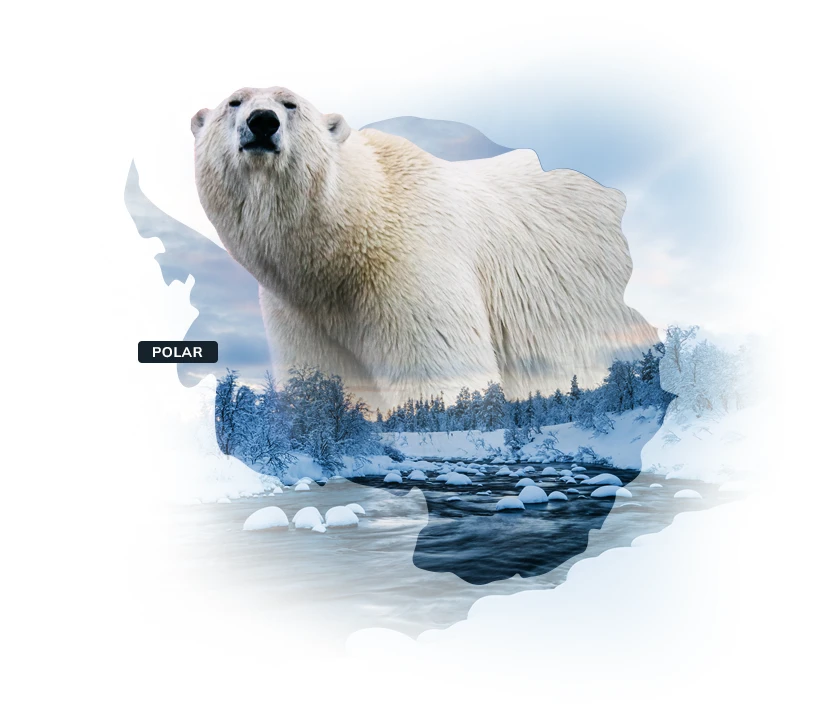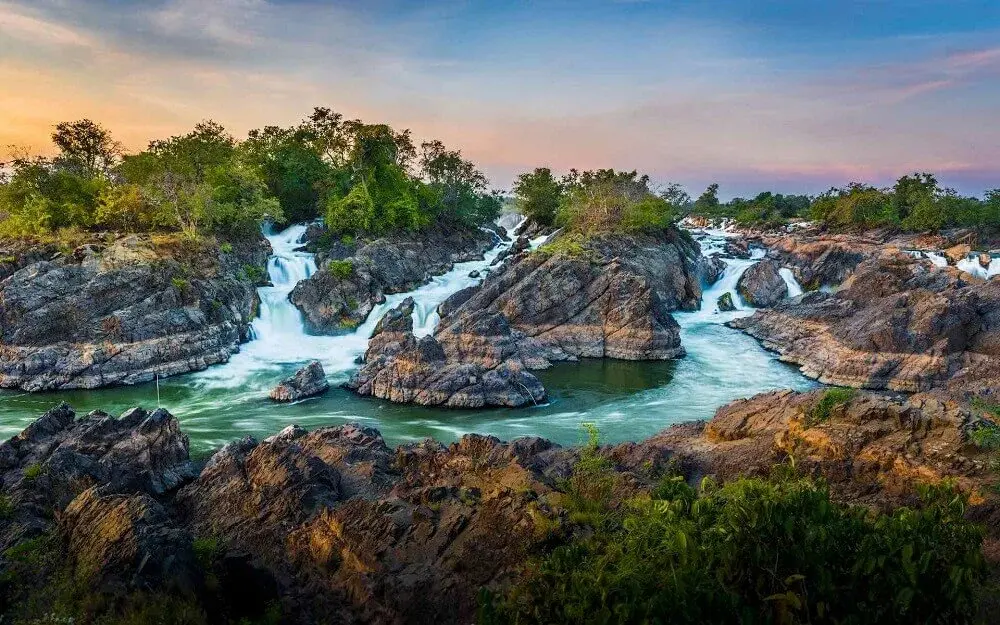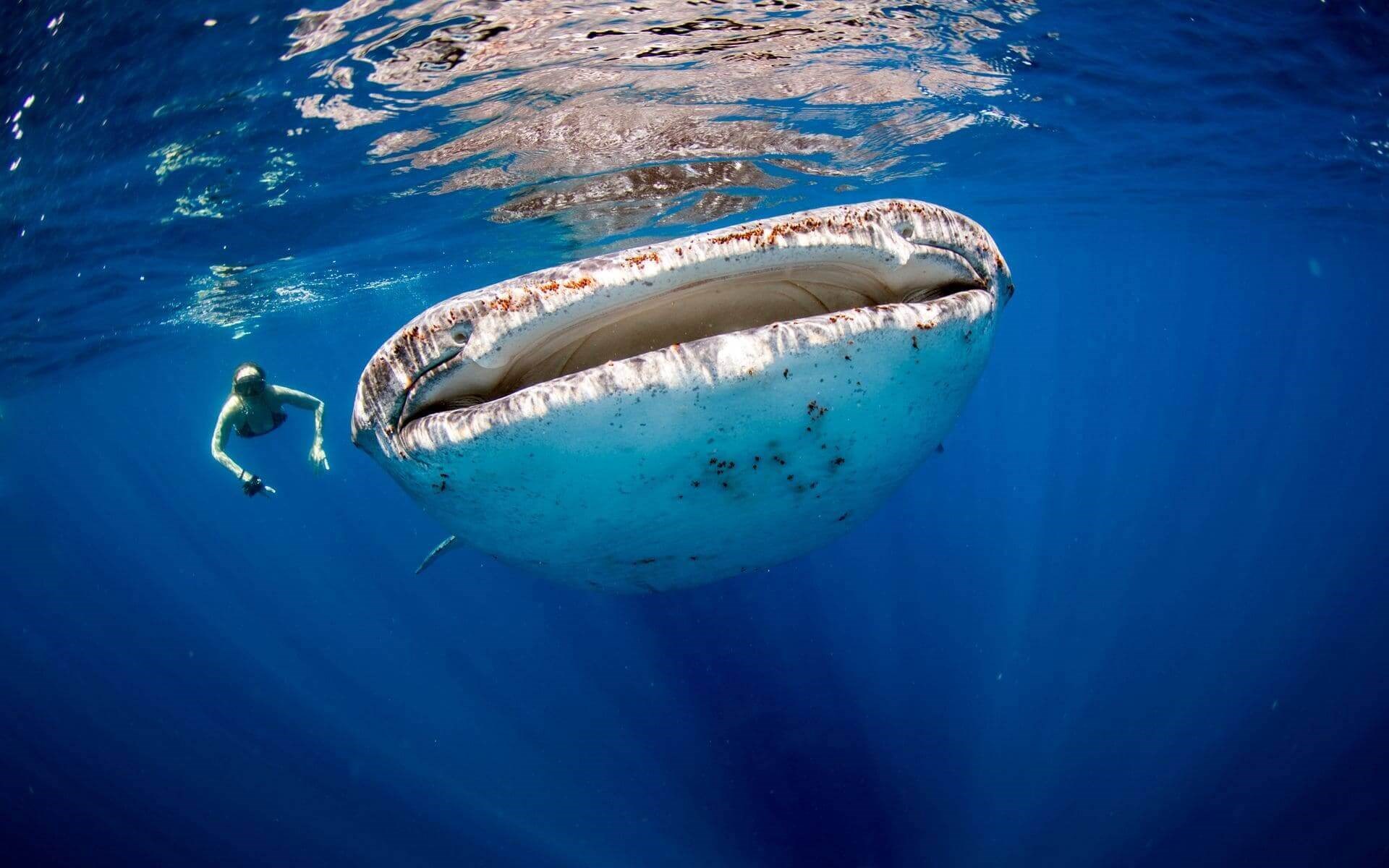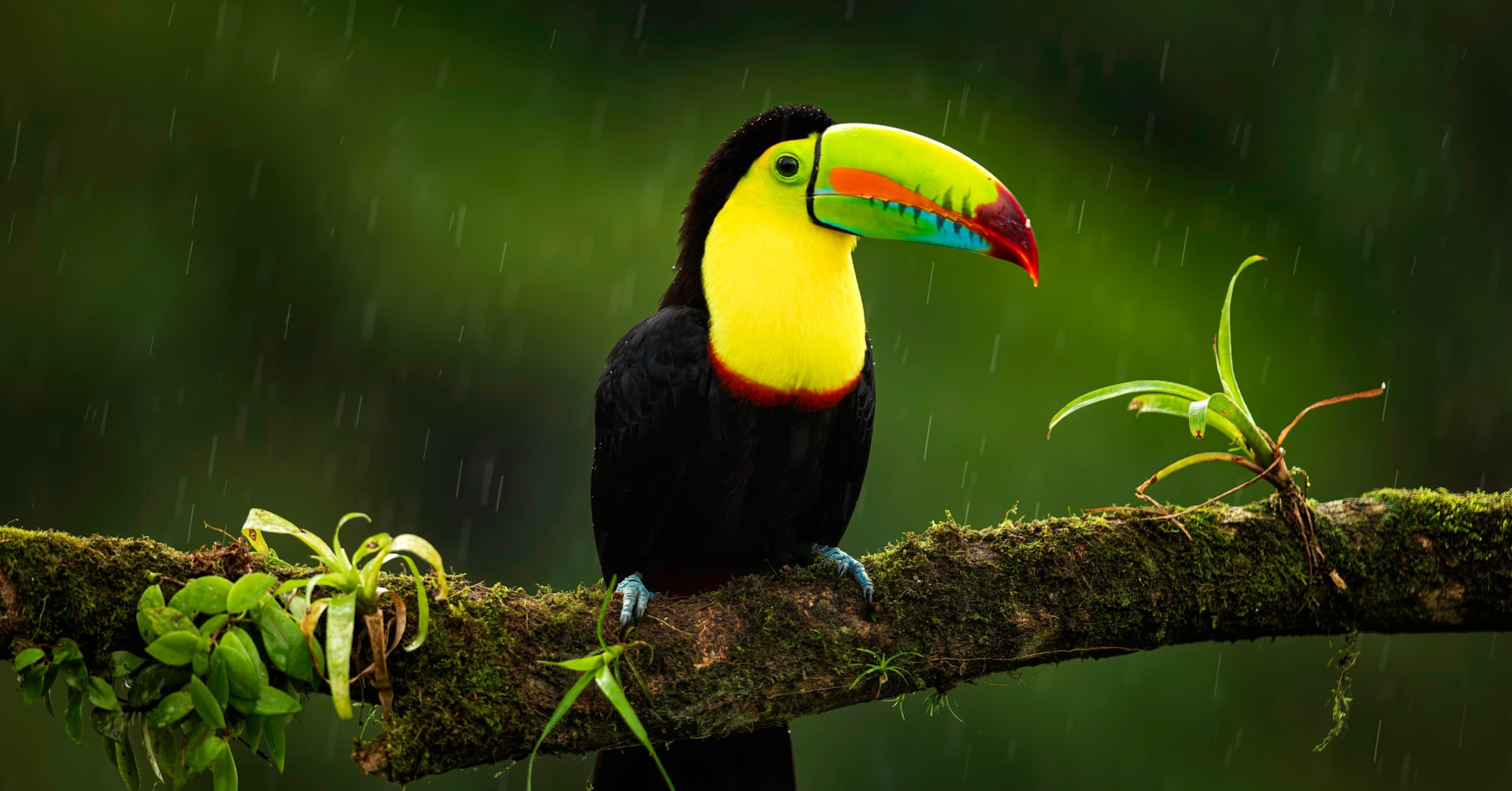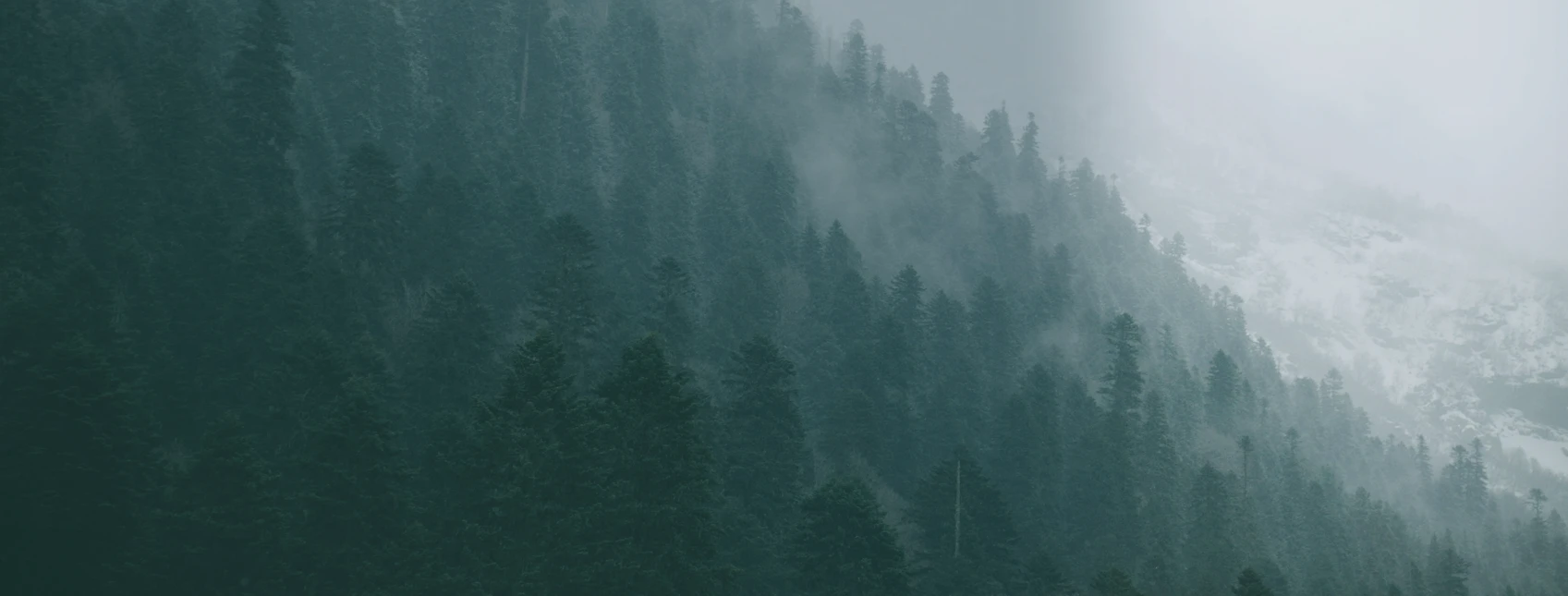Discover 10 of the world's most endangered marine species and where to see them in the wild
Sadly, many marine species are fighting for survival due to human interference. Poaching, climate change, pollution, oil spills, boat collisions and bycatch are all man-made issues that are pushing our marine wildlife to the brink of extinction.
Our oceans and aquatic species are crucial to the planet’s complex web of life, and the disappearance of even a single species can severely affect the whole ecosystem.
In short, the world needs our sea life to survive.
We’re taking a look at 10 of the world’s most endangered marine species. In this post, we discuss where to find them, and how to responsibly observe our magical ocean creatures.
At Wayfairer, we believe in responsible travel, and encourage all travellers to respect the environment and wildlife of their destinations.
For more information on the world’s most endangered species and how to protect our wildlife, visit the International Union for Conservation of Nature’s (IUCN) Red List of Threatened Species.
1. Vaquita
The vaquita is the world’s rarest sea mammal and one of the most endangered animals in the world.
Their name means ‘little cow’ in Spanish, and they are a unique species of porpoise, with a small, chunky body and a round head. Their eyes and lips are coloured with dark markings, giving them the appearance of wearing makeup.
With less than 30 individuals left, the vaquita is critically endangered and facing imminent extinction. They live in only one body of water in the Gulf of California and reproduce only once every two years, however it’s humans that have caused the most destruction to the vaquita population.
Up to 15% of vaquitas die in fishing nets every year, and the species is also threatened by the use of chlorinated pesticides. In response to the threat, the Mexican government banned the fatal gillnets, however illegal fishing still occurs, and the vaquita population continues to plummet.
Where to see the vaquita?
The vaquita is found only in the northern part of the Gulf of California in Mexico. They inhabit shallow waters, generally no deeper than 30 metres, or in the open sea, no more than 25 kilometres from the shore.
Despite this, they are elusive creatures and very difficult to spot. One of the most recent sightings occurred during an 11-day study over September and October by a team of marine scientists, who spotted six vaquitas, including a calf.
2. Whale sharks

Whale sharks are the biggest fish in the ocean, known to grow up to 18 metres long, weigh up to 19,000 kilograms and live for 70 to 130 years. Each whale shark has unique polka-dot markings on their body, similar to a human fingerprint.
They have mouths that are nearly a metre wide, with more than 350 rows of teeth, but these gentle giants feed mainly on plankton, using their mouths as a filtration system.
As of 2016, these beautiful creatures have been classified as endangered on the IUCN Red List of Threatened Species, with an alarming reduction in sightings.
Their disappearance is largely due to commercial fishing and illegal poaching, with demand coming largely from China for their meat, fins and oil which are sold for food, and their skin for bags.
Where to see whale sharks?
Whale sharks thrive in warm, tropical seas, and have been known to migrate all over the world, from the Americas to Asia, to Africa and Australia.
One of the best places to see these creatures is Ningaloo Reef on the western coast of Australia. Whale sharks migrate every year from March to June to feed on the abundance of plankton in the area.
You can also visit the Maldives to encounter the year round population of whale sharks. Head to the South Ari Atoll or the famed Hanifaru Bay from September to December for the best chance of spotting whale sharks, due to the build up of plankton in the wet season.
You’ll also find whale sharks around Flores Island in Indonesia, in Mafia Bay in Zanzibar, across central and southern America, in Koh Tao in Thailand, and in Tofo Beach in Mozambique.
If you’d like to go swimming with whale sharks, it’s important to never swim too close, never touch the animals, and never use flash photography. Read this guide to Responsible Marine Interactions for more do’s and don’ts in the underwater world.
3. Hawksbill sea turtle

The Hawksbill sea turtle is one of the smallest species of turtle, distinguished by their stunning gold and brown patterned shells (known as tortoiseshell).
The Hawksbill sea turtle is the most endangered species of turtle in the world, and is classified as critically endangered by IUCN, with an estimated global population of 8,000, with only 1,000 nesting females.
Unfortunately, the turtles are hunted for their beautiful shells, which are sold illegally to create jewellery and ornamental products.
The commercial trade of tortoiseshell was banned in 1973, however these products, such as earrings, necklaces, sunglasses and bekko combs (used in traditional Japanese wedding dress), are still widely sold across the Caribbean, Asia and Central America.
Where to see Hawksbill sea turtles?
One of the largest Hawksbill sea turtle populations nests on Milman Island in Queensland, Australia and you can also see these rare creatures in Gandoca Manzanillo National Wildlife Refuge in Costa Rica.
If you’d like to see the turtles, ensure you choose a tour with accredited local guides and avoid getting too close to the animals.
4. Sea otter

The gorgeous sea otter is one of the smallest marine mammals on earth, and they play a crucial role in our ecosystem, feeding on sea urchins which allows kelp forests to thrive. They’re an incredible species, boasting an impressive string of skills.
Sea otters can live their entire life without leaving the water; they are one of the few species on earth that use tools to survive (they use rocks to hammer shells open); they are the only marine mammal that can flip boulders over on the sea floor; they consume between 25 to 40% of their body weight everyday; and they adorably hold hands while they sleep, to keep from drifting apart.
They also have the densest fur of any creature on earth, with around 1 million hairs per square inch. Unfortunately, their beautiful fur is also their biggest threat, due to rampant hunting by humans for sea otter pelts. Their populations once numbered over several hundred thousand, however their numbers plummeted to less than 2,000 due to the fur trade. Since the international ban on large-scale commercial hunting in 1911, numbers have increased to just over 100,000.
Sadly, the sea otter is still classified as endangered by the IUCN, due to other threats such as pollution, oil spills and entanglement in fishing equipment.
Where to see sea otters?
California in the US is the best place to find sea otters in the wild. Prime sea otter spotting locations include Moss Landing, Monterey Bay, Pacific Grove, Point Lobos State Reserve, Fisherman’s Wharf and Elkhorn Slough National Estuarine Research Reserve.
You can spot them all year round, but January and February are the best months to see the mothers floating with their baby otters on the stomachs, as pups are usually born between November and March.
5. Whales

They are the giants of the sea, yet whales are one of the most persecuted marine species in the world. They suffer from excessive hunting for their blubber and oil. Some of the most endangered species include the blue whale, the North Atlantic Right Whale and the Fin Whale.
As the largest animal on earth, blue whales average 25 metres in length and 140,000 kilograms in weight. Despite their supreme status, they are endangered species, with an estimated population of only 10,000 to 25,0000.
The North Atlantic Right Whale is one of the most critically endangered species of whale, with an estimated population of 300 to 350, and no growth observed in several decades. The fin whale is the world’s second largest mammal, and has an endangered population of just 30,000, due to rampant whaling.
Although the 1966 International Whaling Commission has afforded whales legal protection from hunting, they still suffer from illegal poaching, pollution, ship collisions and entanglement in fishing equipment.
Where to see whales?
Whales roam all over the world, including the Pacific, Arctic, Atlantic, Indian and Mediterranean Oceans.
The Northern Hemisphere is a popular spot for whale watching, and you can observe several endangered species around the US, Canada, Iceland, Greenland and Norway.
6. River dolphins
River dolphins are another critically endangered species, with the Irrawaddy river dolphin, the Ganges river dolphin, the pink Amazon river dolphin and the Yangtze finless porpoise all in danger of going extinct in the near future.
There are approximately 6,000 Irrawaddy river dolphins left, with around 90 left in the Mekong River population in southeast Asia, while the pink Amazon river dolphin has a remaining population of around 9,000.
There are only around 30 Ganges river dolphins left in the Ganga river, while a 2018 census on the Yangtze finless porpoise showed a population of just 1,012 individuals.
These species are threatened by a myriad of issues including habitat loss, illegal poaching, dam building and irrigation projects, and entanglement in fishing equipment.
Where to see river dolphins?
You can still spot Irrawaddy dolphins in Kratie, in northeastern Cambodia. Visitors can take a boat up the Mekong River with an expert local guide, to view one of the last remaining pods of these dolphins.
The fascinating pink river dolphins live in freshwater environments in the Amazon region, and have been observed in rivers across Peru, Colombia, Ecuador, Bolivia and Brazil.
Unfortunately, it's extremely rare to spot the Yangtze finless porpoise, which only inhabits the Dongting Lake, Poyang Lake and mainstream Yangtze river in China.
It’s also rare to spot the Ganges river dolphin, which lives in the Ganges-Brahmaputra-Meghna and Karnaphuli-Sangu river systems of India, Nepal and Bangladesh.
This region is one of the most populated on earth and has been severely affected by the building of 50 dams, irrigation projects, pollution, and siltation from deforestation.
7. Florida manatee

Manatees are one of nature’s goofiest creatures, with short snouts and chunky bodies. Also known as sea cows, these creatures aren’t fat - their large bodies are actually packed with organs.
They are the ocean's largest herbivores, growing up to four metres in length, weighing around 600 kilograms, and eating 10 to 15% of their body weight each day. These sweet giants have no natural predators (only humans) and even coexist peacefully with alligators.
Sadly, manatees are an endangered species due to boat collisions, entanglement in fishing gear, and habitat pollution. The current population is estimated to be around 6,000 individuals. The Manatee Sanctuary Act in the US prohibits the disturbance of these creatures, however a total of 804 manatees died in Florida waters in 2018, with boat collisions causing 119 of these deaths. The toxic algae crisis was also reported to have caused around 100 manatee deaths in 2018.
Where to see Florida manatees?
You can see Florida manatees in Florida in Three Sisters Springs in Crystal River, Lee County Manatee Park, Blue Spring State Park, Merritt Island National Wildlife Refuge and TECO Manatee Viewing Center. The best times to spot manatees in this region is from November to April.
You can also spot other subspecies of manatees in Alligator Hole in Jamaica, Swallow Caye in Belize, and Tortuguero National Park in Costa Rica.
8. Galapagos Penguin

As the only penguin species found north of the equator and in the Galapagos Islands, this penguin is quite unique.
It’s the smallest of the South American penguin species, and generally survive for 15 to 20 years in the wild. They are one of the few animals in the world that mate with one partner for life.
The Galapagos penguin is an endangered species, with less than 2,000 left in the wild. Their numbers are severely declining due to warming sea temperatures and declining food sources, brought on by El Nino Southern Oscillations (an irregular variation in winds and sea surface temperatures).
They are also threatened by introduced species such as dogs and cats, pollution and bycatch in fishing equipment.
The Galapagos fur seal is another fascinating marine species that’s endemic to the Galapagos Islands. With a declining population of around 10,000 to 15,000, the fur seal is also classified as endangered by the IUCN.
Where to see Galapagos penguins?
The Galapagos penguin and fur seal can only be found in the Galapagos Islands, off the coast of Ecuador. The best time to visit these enchanting islands is during the warmer, wetter season of December to June, with pleasant temperatures and good underwater visibility.
From February to May, you can see penguins, seals, sea lions, turtles and tortoises breeding among a blanket of spring flowers, and witness the blue-footed boobies performing their fascinating courtship dance.
You can also visit during the colder, dry season of June to November, where an abundance of plankton arrives, providing penguins with food and a show for underwater divers.
9. Hawaiian monk seal

Native to the Hawaiian islands, the Hawaiian monk seal is one of only two mammals that are endemic to Hawaii (along with the Hawaiian hoary bat). While most seals live in cold regions, this unique species prefers to live in a tropical climate.
They are also one of the last two surviving monk seals on earth (including the Mediterranean monk seal), and have been classified as an endangered species since 1976.
Although tiger sharks and Galapagos sharks are known to hunt Hawaiian monk seals, their biggest predators are humans.
There are only around 1,400 remaining Hawaiian monk seals, and the Hawaiian government is working to protect these animals and stop people harming them.
The development of coastline has threatened their habitats, and they also have one of the highest rates of entanglement in fishing equipment out of all marine mammals.
Where to see Hawaiian monk seals?
This species of monk seal can only be found in the remote northwestern Hawaiian islands. If you come across a Hawaiian monk seal while exploring these islands, be sure to follow these guidelines on how to be a good neighbor to Hawaiian monk seals.
10. Kemp’s Ridley sea turtle

The Kemp’s Ridley sea turtle is the smallest and rarest sea turtle in the world and also one of the most critically endangered. They usually weigh just 50 kilograms, which is tiny compared to a leatherback turtle (another endangered species of sea turtle) which weighs over 700 kilograms.
In the 1940s, there were 120,000 Kemp’s Ridley sea turtle nests per season, but that dropped to just 700 nests per season by the mid-1980s, due to rampant poaching for their eggs. The eggs are considered a delicacy and people would take truckloads back to Mexico and the US.
Today, the major threats to sea turtles are climate change, garbage in the oceans, oil spills and pollution, and entanglement in fishing equipment.
Where to see Kemp's Ridley sea turtles?
The Kemp’s Ridley sea turtle is mainly found in the Gulf of Mexico, although some nest along the western Atlantic coast.
You can find them nesting from April to September each year, with the majority descending on Rancho Nuevo, a beach in the Mexican state of Tamaulipas.
You can also spot them nesting on the North and South Padre Islands off the coast of Texas. It’s important to never approach or disturb these precious sea turtles.
If you'd like to spot incredible marine life on your next holiday, call our friendly team of Luxury Travel Specialists for a chat about your ideas.





